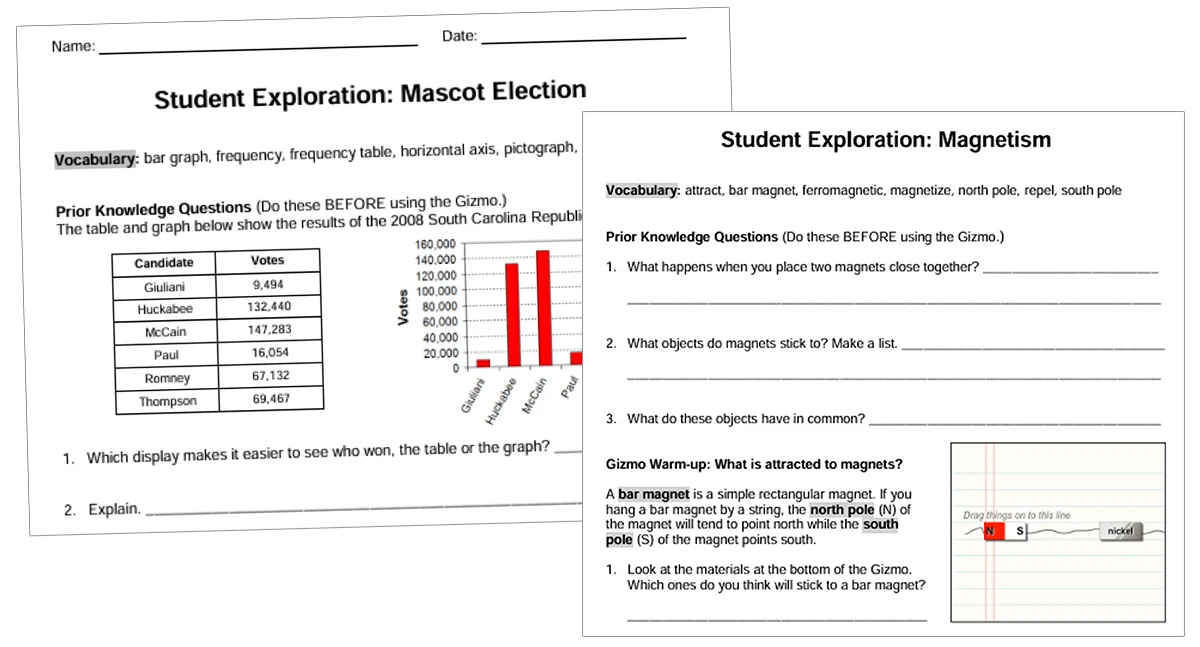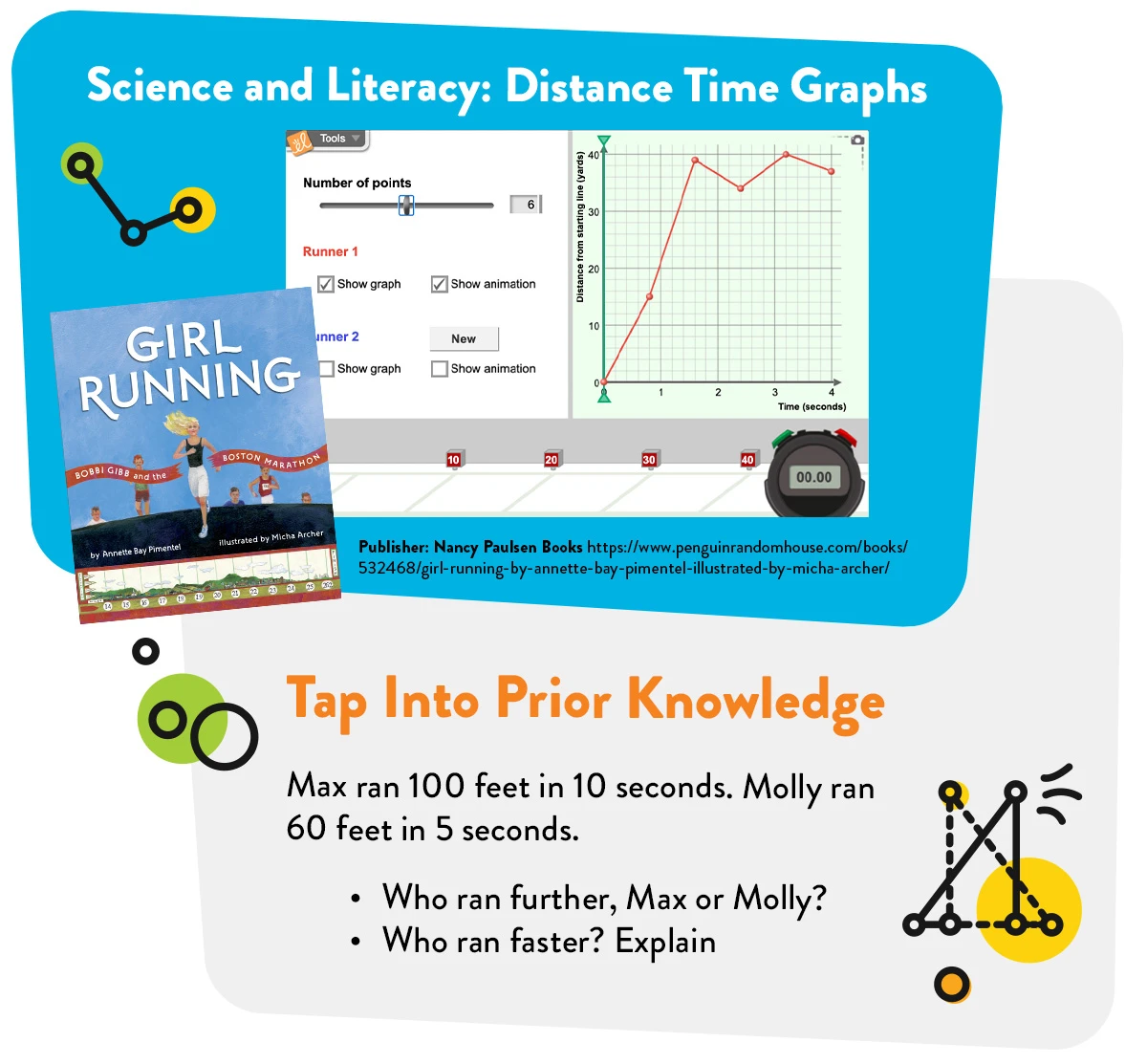Differentiating Gizmos Student Exploration Sheets Effectively

Every student brings background knowledge and experiences to the learning process. That makes differentiation critical for reaching all students and helping them work to the best of their abilities. Gizmos Student Exploration Sheets are one way that teachers can individualize STEM lessons.
What is differentiated instruction?
Teachers differentiate instruction all the time. It may be a planned change, like learning stations or adaptable edtech resources, or a decision that happens at the moment, like when a student is obviously struggling and needs an alternative option. Differentiation is tailoring instruction and assignments to meet the needs of students, including at-risk students, while providing challenges and support.
Benefits of differentiated instruction
Flexibility, choice, and personalization are just a few of the benefits. Differentiated instruction strategies allow students to understand and use their strengths while learning how to work through challenges, maximizing learning opportunities.
How to differentiate in lessons
When conducting whole group lessons with students, Student Exploration Sheets can guide the lesson and questioning with students. Is it desirable to print out those sheets for students?
Consider your lesson objectives when making that decision. With whole-group Gizmo lessons to engage your students and get them to begin thinking about a concept, it may be optional to have a document for writing.
On the other hand, when using the Gizmo later in your differentiated lesson plan to build understanding, the support of a document to guide them might be very beneficial.
Differentiation strategies in the classroom
Teachers differentiate instruction for students in a variety of ways in every subject area. Student Exploration Sheets can fit seamlessly into differentiated instruction.
- Prior knowledge questions from the Student Exploration Sheets can be used as bell-ringers as students enter class.
- Exit tickets featuring one of the questions from the Student Exploration Sheet work well for student responses at the end of class.
Creating differentiated Gizmos Student Exploration Sheets
Student Exploration Sheets are fully customizable (available in Microsoft Word, Google Docs, and PDF formats). With minor changes, it’s easy to make Gizmos Student Exploration Sheets serve different purposes.
Create an outline of the lesson for students to take notes on. What do you want students to notice as you proceed through your planned whole-group lesson? What conclusions would you like them to reach? Create a student document to scaffold questions and observations for the students to achieve your lesson's objectives.

Student Exploration Sheet examples
- Provide data recording templates for individual analysis. If your whole group lesson includes collecting data that will be reviewed to identify patterns, it will help students to have a document they can record the data on as you collect it as a group. Not only will the students be able to practice the skill of recording data accurately in a table or other appropriate format, but they will also have their own copy for the analysis exercises.
Differentiating content with Gizmos
Keep in mind that you don’t need to use the entire Student Exploration Sheet. Pick just one activity and modify the Word document to meet your needs. You can also create entirely new documents using the snapshot feature in each Gizmo to embed pictures, graphs, and data into your documents. A quick question about a picture can be a great formative assessment to be used before, during, or after a lesson in your sequence.

Literacy Connection
For elementary Gizmos users, there’s another way to differentiate content that’s similar to Student Exploration Sheets. Elementary Gizmos help students activate prior knowledge and build background knowledge through literacy connections, complete with comprehension questions, task cards, and wrap-up lessons.
Techniques for differentiated homework
Differentiated homework can be to practice skills or preview upcoming lessons. Differentiating homework helps students show what they know. It allows teachers to meet the needs of students and achieve better results with completion.
Differentiate homework with or without a computer by using snapshots of Gizmos and data. You can create homework where students can practice the skills learned in the whole-group lesson without needing a computer. Or, for students who have computer access at home, give them a second option to use the Gizmos at home.
10 Differentiated learning examples
There are many ways to differentiate lessons to meet the diverse needs of students. Here are some effective strategies:
- Alternative assignments
- Task cards
- Stations
- Edtech resources
- Tiered lessons
- Choice boards
- Project-based learning
- Learning contracts
- Graphic organizers
- Collaborative learning
Engage your students with Gizmos
How about creating a follow-up activity that applies the concepts learned during the whole-group lesson, such as writing prompts for the STEM concepts in Gizmos? A variety of other Gizmos supplementary resources help extend learning and meet students’ needs. Engaging students from the opening lesson through assessments while differentiating at the same time is possible with Gizmos.
“Gizmos have been an extremely successful tool to differentiate and to allow the students to go at their own pace at the depth they need for their own learning.”
- Gizmos Middle School Science Department Chair, Lewisville Independent School District, TX

Are you looking for STEM resources that allow this kind of flexibility for your students? It’s time to take a FREE Gizmos trial.
Start My Trial